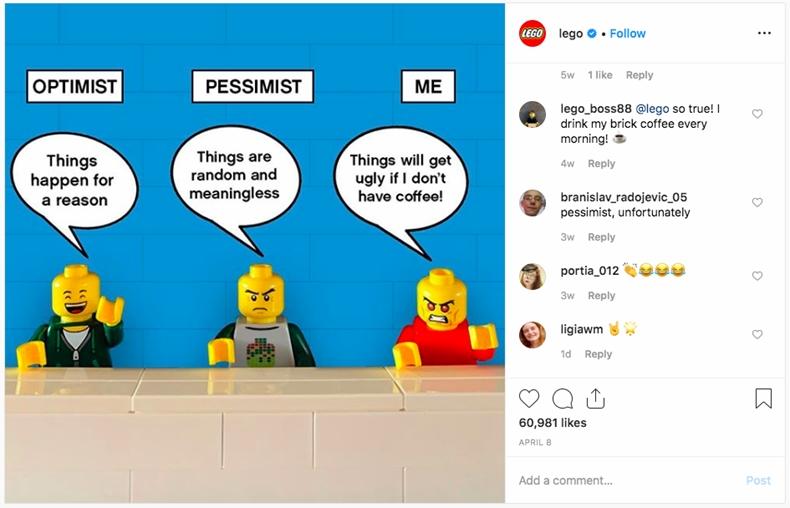For most consumers, social media is a part of everyday life. In fact, 69% of US adults use Facebook, and 37% have an Instagram profile. And consumers spend roughly two and a half hours per day browsing these social media networks.
As a marketer, social media offers you an excellent opportunity to reach customers in a new way. But how can you stand out on social media when massive amounts of content are exchanged on those platforms each day?
According to a recent Yes Marketing survey of consumers, you need to inject a little personality.
Why Personality Helps Brands Win on Social Media
Although the Yes Marketing study found that discounts are the top reason consumers follow and engage with brands on social media, they also engage with brands for other reasons:
- For humor: 30% of consumers engage with brands that share funny or interesting social posts.
- To show agreement: 35% will engage with a brand’s post if they agree with it personally.
- To offer positive feedback: Social media users are more likely to engage with a brand on social media to share positive feedback (29%) than negative feedback (20%).
In other words, consumers want brand accounts to feel more human and relatable.
Your brand will get lost among the masses online if you rely on canned tweets and Facebook posts that anyone could write. So, to stand out, give your brand a voice. Inject humor and be consistent with it, have a point of view, and interact with customers who send you feedback.
For example, Lego populates its Instagram account with more than just sales pitches for its products. The brand often makes pop culture references and uses a relatable voice and tone.

And, on Twitter, Netflix stands out as a leader in the personality game. Along with announcing releases of new shows, the streaming giant is known for reacting to timely events with funny responses and candidly engaging with followers.
Four Tips for Defining Your Brand’s Personality
Although brands like Lego and Netflix have found success on social media with humor or commentary on current events, creating a social media personality for your brand is easier said than done.
The opportunities are seemingly endless, and you don’t want to create a personality that goes overboard or annoys followers. So where do you start?
- Research your audience. You won’t find success commenting on or discussing any and all current events. Brands that do so fail to portray authenticity, and users see right through it. Instead, identify the topics your customers want to hear your thoughts on, and post accordingly. Focus groups or surveys can be a quick way to gain those insights. Also monitor your competitors’ social media outreach or other social media trailblazers that successfully connect with users who look like your best customers. Then, A/B-test several posts and track engagement.
- Be consistent. Whatever your voice and tone on social, it needs to be consistent from post to post. Whether promoting a new product, offering a discount, or posting in response to a current event, it’s vital that you stay true to your brand. This principle goes beyond social and applies to all marketing channels, including direct mail, push, email, and display. A style guide is an invaluable resource that can help keep a unified brand message across every marketing channel.
- Tailor your strategy for each platform. If you post the same content across all platforms, you risk coming across as inauthentic. Each social media platform has different strengths and requires different strategies. For example, Twitter users expect short, digestible bits of information rather than long threads. Twitter is also one of the best channels for collecting and responding to customer feedback. On Facebook, brands should remember that the platform’s algorithm favors video posts. If you’re on Instagram, consider the popularity of the stories feature and try to avoid overly curating your posts. Always make sure you’re up to date with how consumers use each channel and tailor your approach accordingly.
- Set goals and stick to them. It’s easier to create a consistent personality and approach on social media when you have goals in mind. Whether that’s to change the perception of your brand, drive traffic to your site, or reach a certain number of likes over a period of time, the goals you set should drive your strategy. Without goals, your content and overall social media personality can feel aimless—unplanned.
Social media offers an excellent opportunity for brands to form deeper connections with key audiences to drive both brand awareness and customer loyalty. But it’s easy to get lost in the noise. As you formulate your social strategy, remember that consumers want to see social posts from brands that show personality, provide entertainment, or comment on relevant current events.
The original purpose of social media sites like Facebook was for users to form connections with others. Now, it’s time for your brand to do the same.
